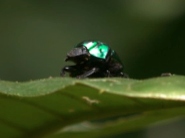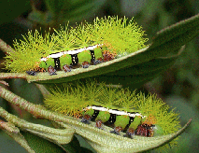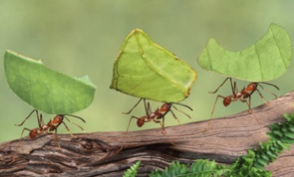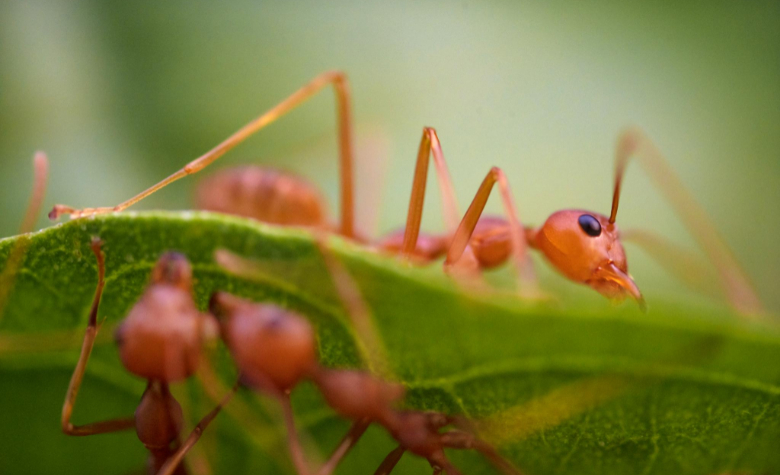The rainforests of eastern Ecuador are home to at least 10,000 to 50,000 insect species including several photogenic ones such as jewel-like beetles. Several insects come out only at night to avoid been prey to birds and other predators.
Many of these tiny creatures are willing to leave humans alone — yet beware, a few Ecuadorian insects love to bite anyone who crosses their path.
The country’s caterpillars are true masters of disguise; they mimic everything from twigs to vipers’ heads to bird droppings. And, of course, they morph: Ecuador has wonderful butterfly farms in different locations including Mindo and Misahuallí.

Several types of ants can be observed in Ecuador’s forests including leaf-cutter ants which march in columns along the forest floor carrying pieces of leaves like sails above their heads. The ants take the leaves into their underground colony to rot into a mulch producing a fungus for food.
It is a fact that “unfriendly” insects do live in Ecuador, but they are not a big threat. People should, however, exercise a little caution. Be careful about where you place your hands. Shake out shoes and clothing and avoid any unwelcome surprises. Keep in mind, however, that diseases spread by insects are a possibility in any country.

The bite of the female Anopheles mosquito transmits malaria to humans. There is, however, a low risk of contracting malaria in Ecuador — and only in certain areas, at altitudes below 1,500 m (less than 4,921 ft). The threat from malaria does not exist in the cities of Guayaquil, Quito, the Central Highland areas (including Cuenca), or the Galápagos Islands. If traveling to a high-risk region, bring emergency malaria treatment. Take the prevention medication before, during, and after travel as directed by your doctor.

Yellow fever spreads by the bite of an infected, day-biting mosquito. The disease is mainly seen in rural areas, but there can be outbreaks in cities. Yellow fever has been known to be present in Ecuador but not, of course, in all regions.
Visitors need not be overly concerned about this disease. Prior to their journey, health professionals in their own country will advise travelers about necessary vaccines. The U.S. recommends the vaccine for travelers visiting regions lower than 2,300 m in elevation, in provinces east of the Andes Mountains, including Morona-Santiago, Napo, Orellana, Pastaza, Sucumbios, and Zamora-Chinchipe.
How To Avoid Bug Bites
- Cover exposed skin. Wear long-sleeved shirts, long pants, and hats.
- Use an approved insect repellent.
- Use permethrin-treated clothing and gear. These items remain protected after several washings. Check the product information. If treating items yourself, follow the instructions carefully, and do not use permethrin directly on skin.
- Sleep in air-conditioned or screened rooms.
- Use a bed net if the sleeping area is exposed to the outdoors.
- If bitten, avoid scratching the area. Apply hydrocortisone cream or calamine lotion and reduce the itching.
How To Prevent Tick Bites
- Cover exposed skin by wearing long-sleeved shirts, long pants, and hats.
- Tuck in shirts; tuck pants into socks. Wear closed shoes instead of sandals.
- Avoid wooded and brushy areas with high grass, brush, and leaves.
- Walk in the middle of hiking trails.
How To Find and Remove Ticks
- Bathe or shower as soon as possible after coming indoors.
- Check your entire body (under arms, in and around ears, belly button, behind knees, between legs, around waist, and especially in hair). Use a hand-held or full-length mirror to view all parts of your body.
- Remove ticks in the proper manner.
- Parents should check their children for ticks.
- Check your pets and belongings. Ticks can be on outdoor equipment as well as clothes.



















